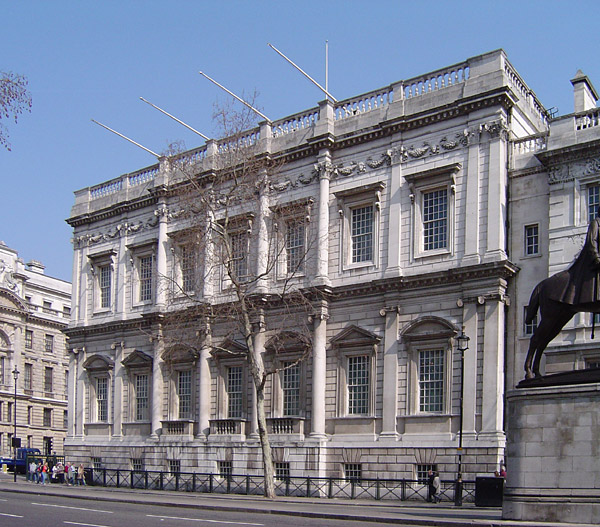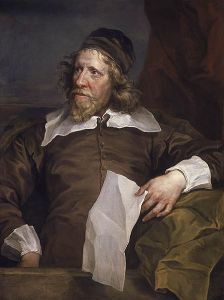Posts Tagged ‘York Place’
Banqueting House
The Banqueting House is the only remaining complete building of Whitehall Palace and remains one of London’s most important banqueting venues. It plays host to many royal and society events.
Whitehall Palace was the principal royal residence between 1530 and 1698, and the Banqueting House dates from 1622. It was designed and built by Inigo Jones for James I (1603-25) to host occasions of state, plays and masques. At the time of its building it was one of the first classical buildings in Britain, surrounded by red-brick Tudor buildings.
The site upon which the Banqueting House was built had stood York Place, the London residence of the Archbishops of York since the 14th century. It’s proximity to the king’s residence was a sign of the importance of the archbishopric of York, the most important in the Church.
In 1514 Thomas Wolsey (c.1475-1530) was made Archbishop of York and had an unparralleled position of trust with King Henry VIII (1509-47). York Place became a favourite place for the king to visit. The King was later to own it, when he his relationship with Wolsey failed and Henry stripped him of all his properties in the South of England. It was renamed Whitehall and became a residence of the King.
By the time of Henry’s death the palace was the largest in Europe, but it was far more than just a residence. Within the grounds temporary structures were also built for special occasions. The largest of these was a banqueting house built by Queen Elizabeth I (1553-1603) to host entertainments associated with her marriage negotiations. This building occupied the site of the current banqueting house.
The initial structure of timber and canvas stood for 25 years before being replaced by a brick structure which was completed in 1609 for james I. It was built for the performance of elaborate masque performances; a cross between a ball, an amateur theatrical, a play and a fancy dress party, designed to communicate messages of royal authority.
Inigo Jones was a set designer and scene painter of such masques, and later became an architect after his Grand Tours of Europe. He worked closely with his partner and playwright Ben Jonson who had also spent time abroad. Jones’s travels inspired the classical sets he designed for the Masques, the finest example being of the masque Coelum Britannicum, performed on Shrove Tuesday 1634.
By this time a third structure stood on the site, the current Banqueting House, which has been designed and built by Jones in 1622 after the previous structure had been destroyed by fire in 1619. His design was based on an ancient form of building that most closely resembled the usage of the banqueting house, a basilica (an ancient Roman meeting hall). The Roman architect Vitruvius stipulated that a basilica should be twice as long as it is wide, which the banqueting House is. The structure was also raised on a vaulted basement.
The work began in 1619 and was completed in 1622 at a cost of £15,618 14s. By 1635 its use as a venue for masques ended due to concern about the damage smoke may do to the ceiling painting by Rubens. The painting meant the building could not be used for its original purpose. But from this point on it was a venue for important receptions.
The Banqueting House was also the venue of a more dark and sinister event in 1649. After years of struggle between the authority of Parliament and the power of the King there was a Civil War (1642-9), during which Charles I was found guilty of treason and sentenced to death. His execution took place on a scaffold erected in front of the banqueting House.
For some time after the execution the banqueting House was not in use. But, in 1654 it became the Lord Protector’ hall of audience. In that year Oliver Cromwell had become Head of State as Lord Protector. After Cromwell’s death in Whitehall (1658), the house was again unused until 1660 when the monarchy was restored. It was then restored for use as a ceremonial court chamber and reception venue.
One of the ceremonies carried out here was the distribution of bread, fish, wine, cloth and money on Maundy Thursday. It also included a traditional washing of the feet of the poor by the sovereign. The tradition of distributing Maundy money continues, taking place at a number of cathedral venues.
A highlight of the building is the ceiling painting by Paul Rubens. It was commissioned by Charles I (1625-49), to celebrate the life and wise government of his farther James I. They were installed in March 1636 after being shipped from Antwerp where Rubens had painted them in his studio. Some sketches of the scenes that date from his visit to London (1629-30) are now in the National Gallery.
Banquesting House is visited on the London Grand Tour. Follow the link to make a tour reservation







